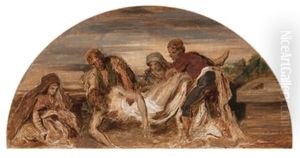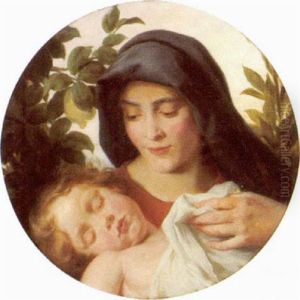Andreas Groll Paintings
Andreas Groll, born on November 30, 1812, in the city of Vienna, Austria, was a pioneer in the field of photography during its early days. His interest in the emerging art and science of photography began in the 1840s, which was a time of great experimentation and innovation in the medium. Photography was still in its infancy, with various processes and techniques being developed and refined.
Groll initially trained as a painter, but he soon turned his attention to photography, recognizing its potential as a new form of artistic expression and documentation. He was particularly interested in the daguerreotype process, which was the first commercially successful photographic process. This method, invented by Louis Daguerre in France, produced a sharp and detailed image on a silver-coated copper plate.
In 1843, Groll began to experiment with this new technology, and by 1845, his works were being exhibited. He was one of the first photographers to capture images of Vienna, which provided a valuable visual record of the city during the mid-19th century. His photographs included cityscapes, landmarks, and portraits, showcasing his versatility and skill as a photographer.
Aside from his work in Vienna, Groll is also noted for his photographic journey to the then-Ottoman Empire. In 1858, he traveled to the Balkans, capturing some of the earliest photographic images of this region. His work during this trip resulted in a significant portfolio that provided a glimpse into the culture, architecture, and landscape of the Balkans during that period.
Andreas Groll's contributions to photography were not only artistic but also technical. He engaged with contemporary debates and developments in the field, and his work helped to establish photography as a credible and valuable art form. Despite his importance to the history of photography in Austria and his pioneering work in the medium, Groll did not achieve significant financial success during his lifetime.
Groll's health declined in the later years of his life, and he passed away on March 2, 1872, in Vienna. His legacy as an early photographer has been reassessed and celebrated in more recent times, with historians and photography enthusiasts acknowledging his role in the development of photography as both an art form and a tool for documenting the world.












